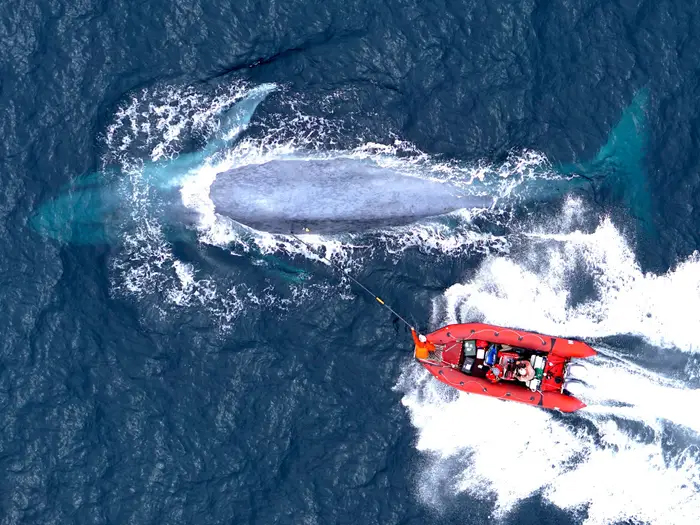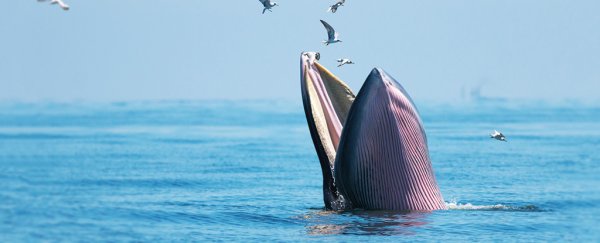Scientists have found that large whales eat at least three times as much as previously thought, a discovery which highlights their importance in keeping the oceans healthy.
The study, published Wednesday in the peer-reviewed journal Nature, provides clues as to why wiping out millions of the largest whales on the planet was so devastating to marine environments.
Reestablishing the whale population could do wonders for marine environments and might even help replenish dwindling fish populations, two scientists told Insider.
The krill paradox
From 1900 to 1970, industrial whaling wiped out about 1.5 million larges whales around Antarctica.
"The largest whale species on the planet were systematically hunted, which reduced abundances probably greater than 70 percent in many cases," Nicholas Pyenson, an author on the study and curator of fossil marine mammals at the Smithsonian Institution, told Insider.
"99 percent of the blue whales that were alive in 1900 were gone by 1960," he said.
Scientists in the 70s had assumed that without the whales to prey on them, populations of krill and fish would explode and other predators would thrive as they filled the gap in the food chain.
But that's not what happened. The ecosystem never bounced back.
"In actuality, there was an incredible decline [of krill] over the following 50 years – and it's still happening today," said Matthew Savoca, the lead author on the study and a postdoctoral scholar at Stanford's Hopkins Marine Station.
"The steepest declines in krill biomass have been seen in areas where the most whales were killed," he told Insider.
The "krill paradox" had left scientists puzzled.
Whales turn over a lot more food than previously thought
Up until recently, it was extremely difficult to get a sense of how large whales fed. They can't be kept in captivity and they feed deep under the surface of the water.
The scientists running the study developed sensors that can detect fish and krill as the whale eats them.
These sensors, which are stuck on the whales using suction cups as seen in the video below, were used to track 321 baleen whales from seven different species in the Southern Ocean, which surrounds Antarctica.
Using this tech, the scientists found the whales eat three or more times than was previously thought.
That means that pre-whaling populations in the Southern Ocean alone would have eaten about 400 million metric tons of krill per year, far more than had been assumed.
That's also twice as much the total amount of krill left in Antarctica today.
 (Elliott Hazen under NOAA/NMFS permit 16111)
(Elliott Hazen under NOAA/NMFS permit 16111)
Above: Researchers approach a blue whale to attach a suction-cup tag.
It means whales produce a lot more of their iron-rich poop, the fact which explains the severity of environmental damage when they were killed.
"We believe these whales are acting as key nutrient recyclers in this ecosystem," said Savoca.
As the whales feed and defecate, they redistribute the iron towards the surface of the ocean. That makes the iron available for phytoplankton, small algae which can't grow without the nutrient.
These in turn are eaten by krill, which are eaten by the whales.
Without the whales, a large proportion of this iron falls towards the bottom of the ocean, effectively leaving the ecosystem.
Because the whales seem to be such a pivotal actor in the ecosystem, reestablishing the whale population in the Southern Ocean and in other oceans would be beneficial to the marine environments, said Pyenson and Savoca.
"You'd see more krill, more whales. You would probably also see, as a consequence of a healthier ecosystem, is greater fish yields, penguin populations might rebound, there are all kinds of downstream consequences," said Pyenson.
Whaling today "doesn't have really that much of an impact on the world's whale populations," he said, because its scale is very small compared to the past.
But far more whales – hundreds of thousands – are killed accidentally by humans, either by getting hit by ships or by getting stuck in fishing gear, Pyenson said.
This article was originally published by Business Insider.
More from Business Insider:
